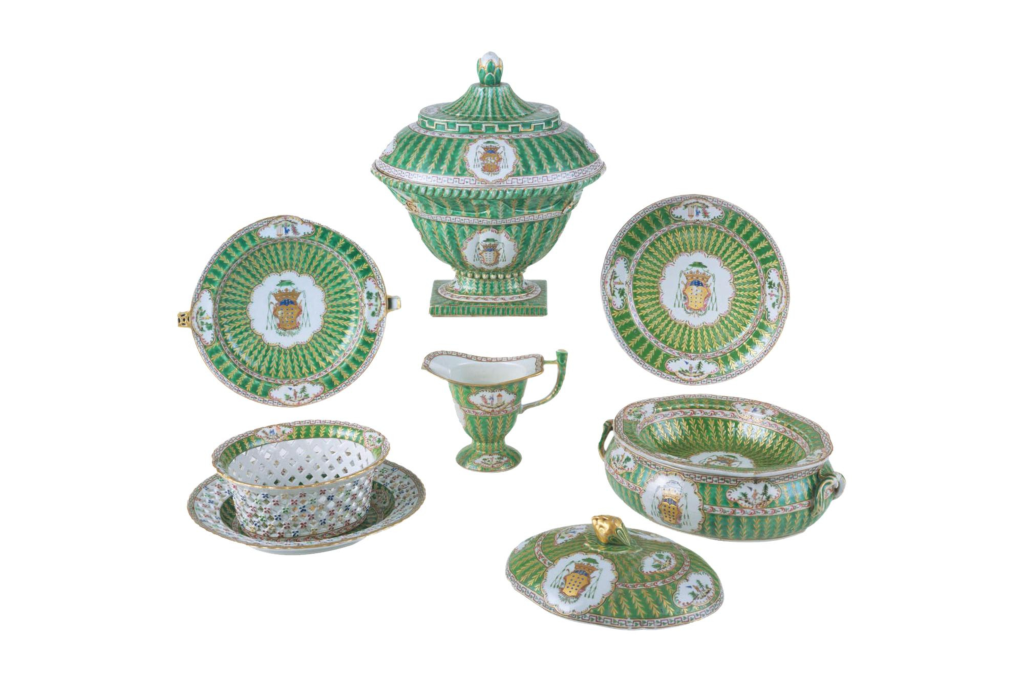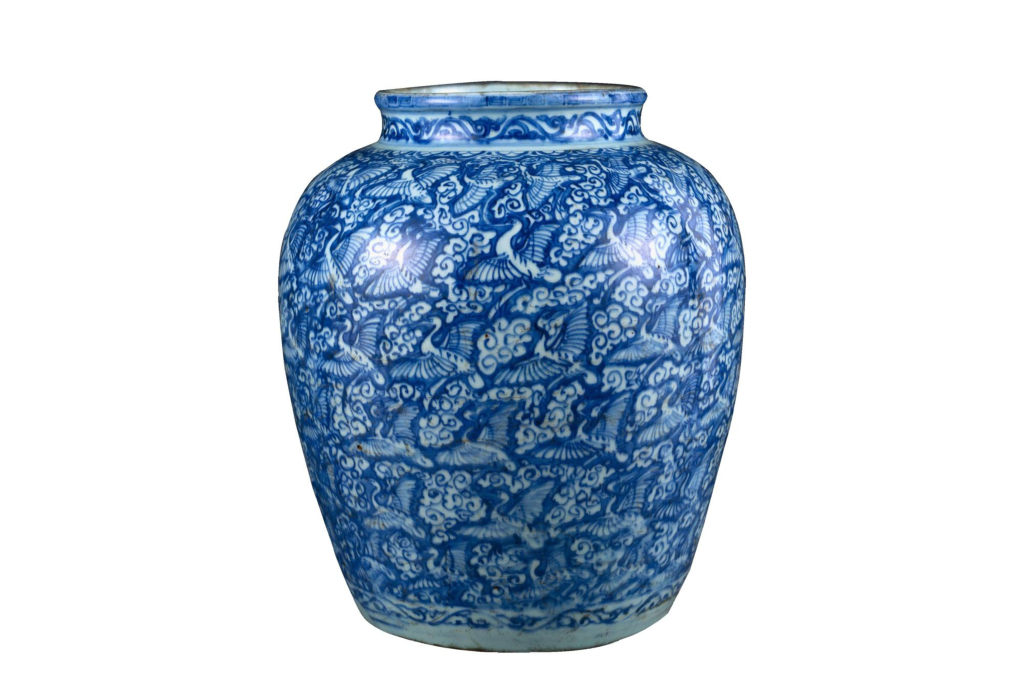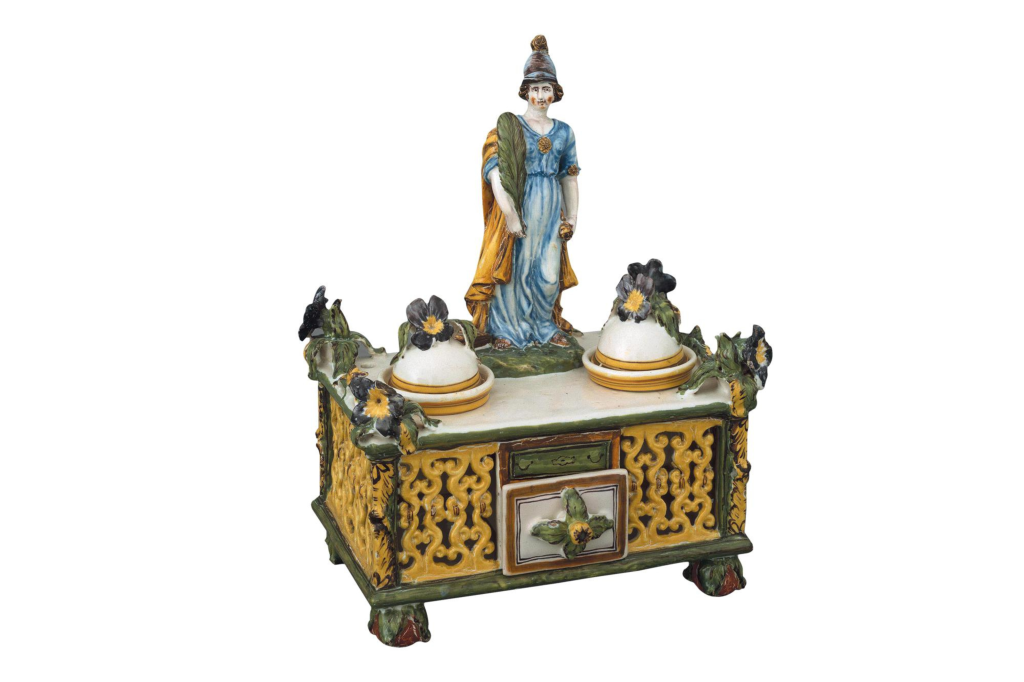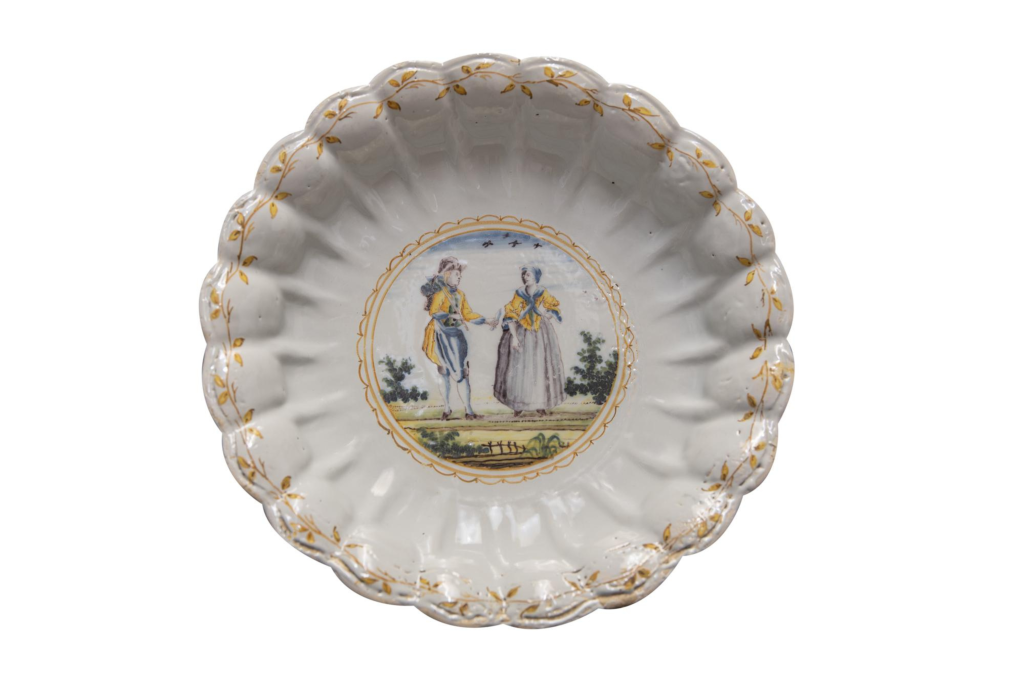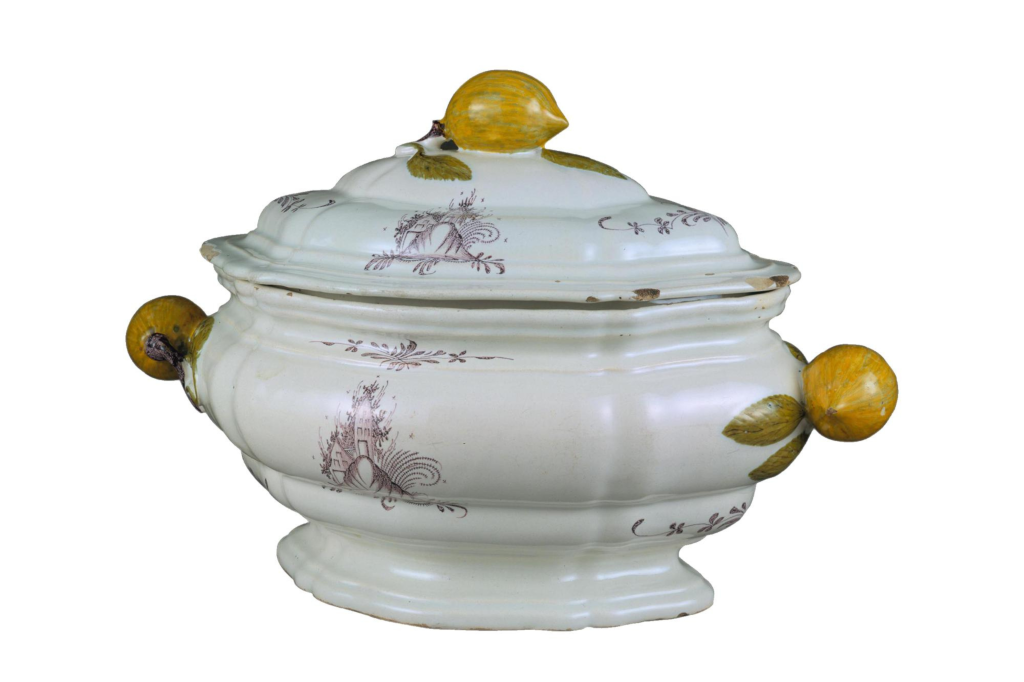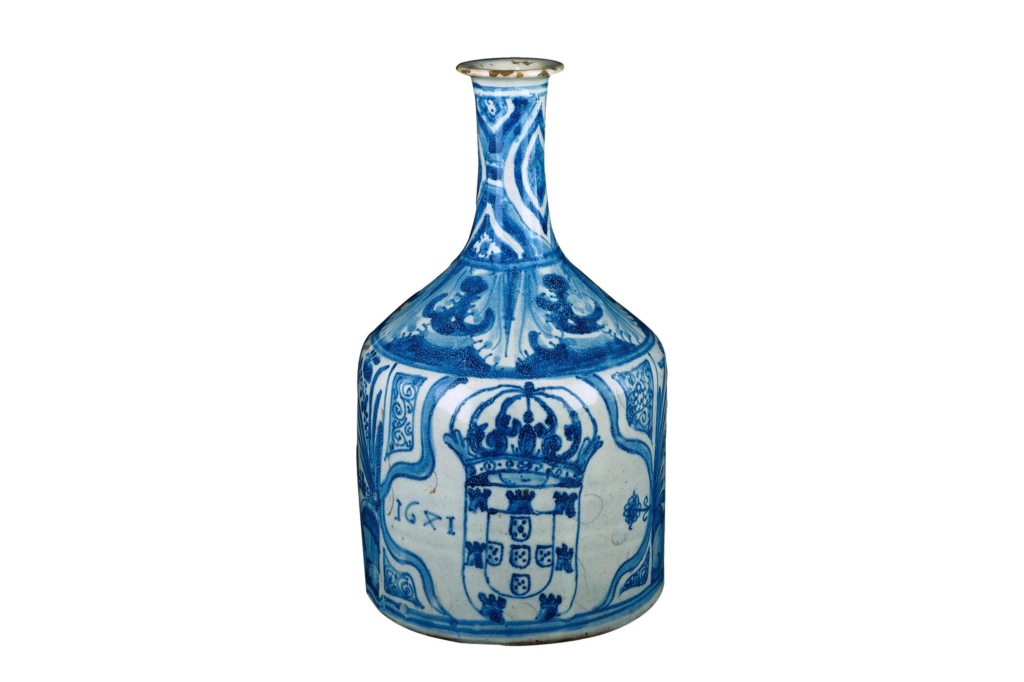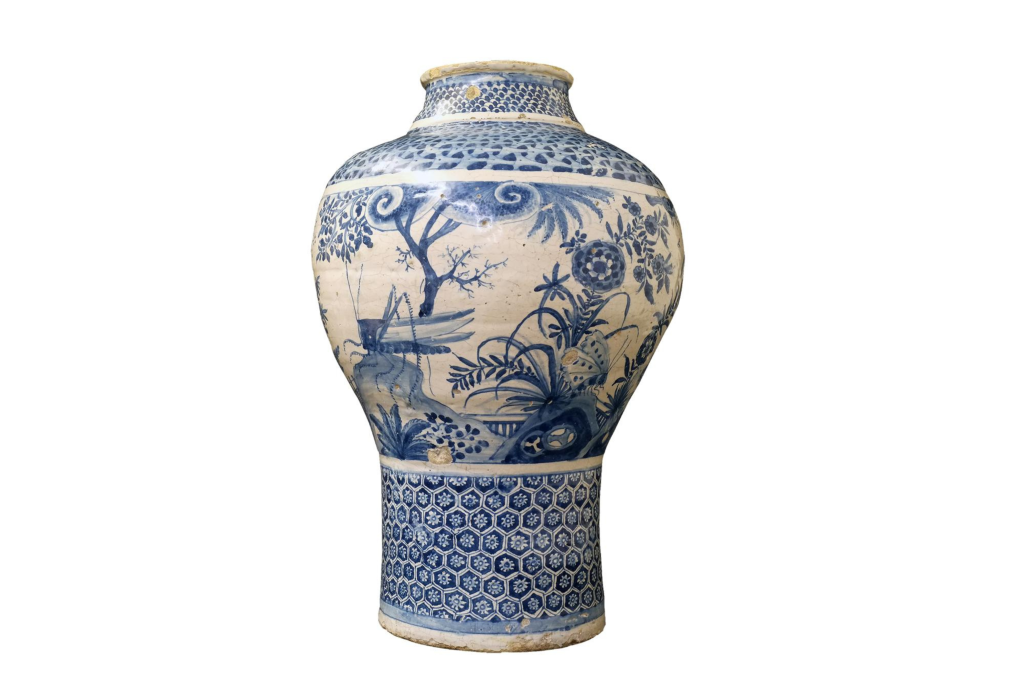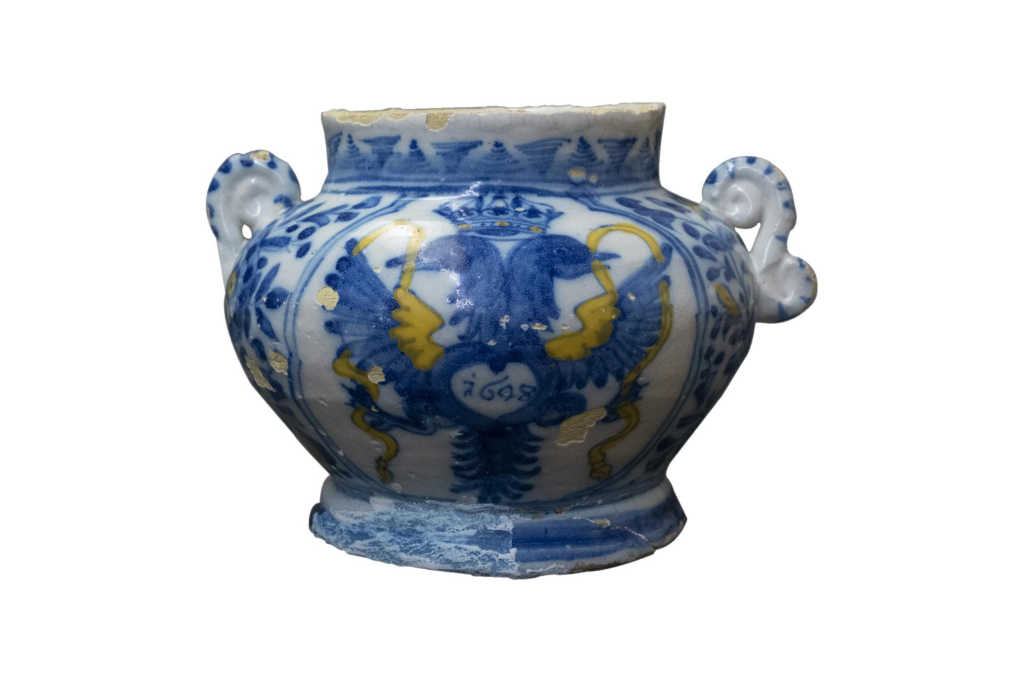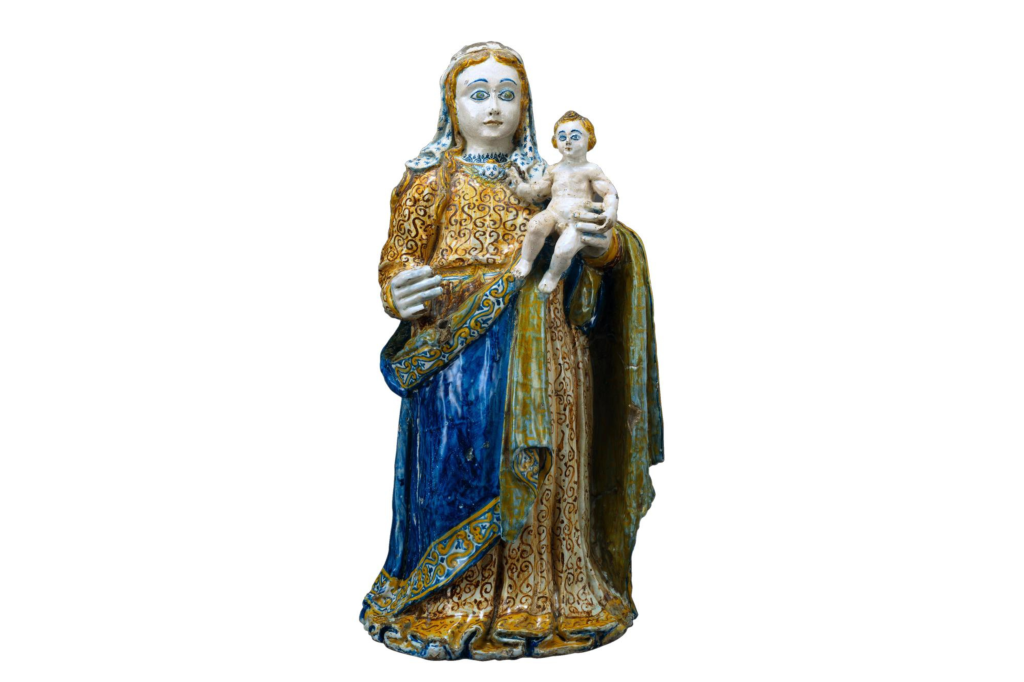
In the middle of the 16th century, the manufacture of faience began in Portugal with the settlement of Flemish potters in Lisbon. Modern Mannerist influences, coming from Flanders and Italy, were felt in these first productions, but also in the following decades.
This Virgin and Child, a rare typology in the faience collections of national museums, refers to a tradition of Italian ceramic sculpture that recalls the extraordinary works from the workshop of Andrea della Robbia or Santi Buglioni.

